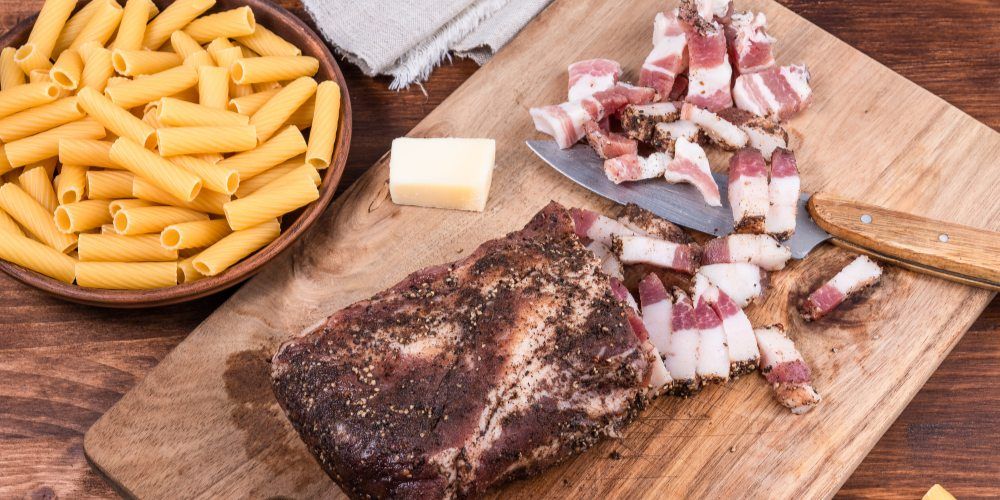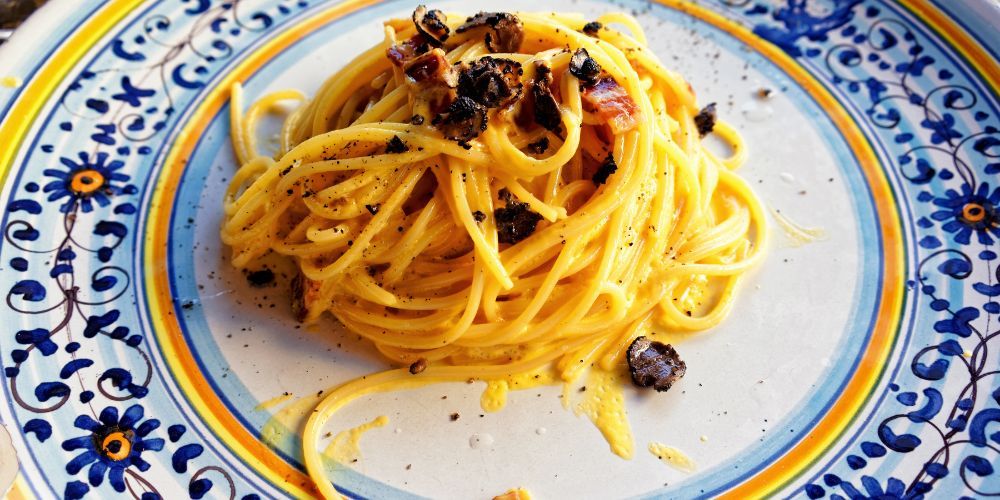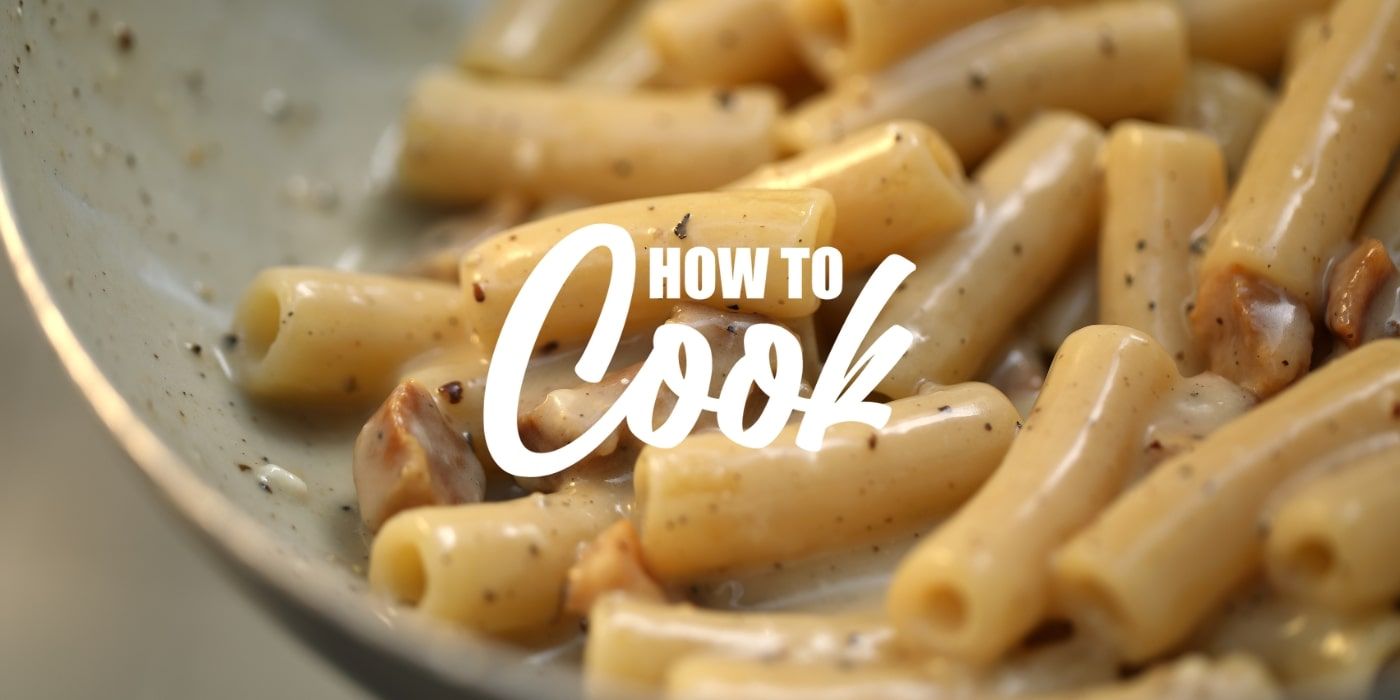Its name derives from Gricium or Gricia, a Roman term for the gray color of the guanciale after cooking. Also called amatriciana bianca (white amatriciana), this traditional dish from the Lazio region has won millions of people over thanks to its distinct and distinctive flavor.
Its ingredients are readily available and it is also simple to prepare, but pay attention to the process! It seems like a simple dish to make but it is not. Together with amatriciana, cacio e pepe and carbonara, Gricia is one of the most delicious and renowned dishes of Roman and Latium cuisine and is much appreciated by tourists and not only! A typical osteria dish, you can now also find it in the most renowned restaurants and why not, even in starred ones when you're visiting Rome.
Before we discover together how to prepare Gricia with the traditional recipe, if you're thinking of spending a few days in Rome, you cannot do without considering the Visit Rome Pass. A travel companion that takes you on a journey to explore the Eternal City with many advantages and conveniences.
More informations on Visit Rome Pass
How to prepare Gricia? Here is the recipe

The recipe of Gricia is now known to almost everyone, but let's recap it together. The most commonly used pasta shapes for this dish are rigatoni, mezze maniche and spaghetti.
Ingredients for 4 people:
- 320g pasta
- 250g of guanciale
- 100g pecorino romano cheese (preferably grated)
- black peppercorns (to grind)
- pasta cooking water
Prepare the pecorino cheese in advance, grate it coarsely and place it in a bowl. Be careful not to use bagged pecorino: in contact with heat, it will tend to stringy, consequently you will risk the success of the dish. Immediately afterwards start cutting the guanciale into cubes and set them aside, then pound the peppercorns in a mortar. Meanwhile, in a saucepan, boil the water for the pasta already salted, and in a frying, pan brown the guanciale. As soon as the pasta is al dente, stir it into the pan used for the guanciale with a ladleful of the cooking water. Remove the pan from the heat, add the pecorino cheese and pepper to the pasta and stir for a few minutes. Now it is ready to be served!
The most difficult part of the recipe is definitely making the pecorino cream. There are various schools of thought on how to make Gricia always creamier. Some people dip the pecorino cheese on top of the pasta, still in the pan, and cream it, while others use a different method of mixing the pecorino cheese and a little cooking water in a bowl with a whisk and then seasoning the pasta with it.
What wine to pair with this dish with such a strong character? The best choice is to opt for a full-bodied and decisive red wine while, if you are a white wine lover, you should favor wines with an acidic and fresh flavor, capable of contrasting the richness of Gricia.

Hand the floor to Janine Bruno, Italian-American food creator for her @homemadebybruno and Italian culinary experiences curator.
In my experience, there are a few simple steps that you must do in order to assure perfection for this traditional, delicious dish. Here are my 5 tips:
1. Boil your pasta in shallow, salted water. You will want to have an extra starchy pasta water to help build your sauce.
2. Use Pecorino Romano- in the US, the best one available is Fulvi. It is made in Lazio, and produces a creamy and balanced sauce. Make sure it's freshly grated super fine like a powder!
3. Slice your guanciale and add to a cold pan, as the pan heats up it will nicely crisp it up and be sure to keep at a medium flame to prevent burning.
4. Once your pasta is al dente, add to your guanciale along with a ladle of starchy pasta water. In a separate bowl, you will add a ladle of pasta water to your pecorino and some freshly grated black pepper to create a paste.
5. Remove from heat and mix all together rapidly until it is all nicely combined and creamy!
Gricia or Griscia? Let's discover its origins

This dish originated in the countryside of Lazio, where farmers and shepherds used ingredients that were easily stored and available. Thanks to their livestock and crops, pecorino and guanciale were the elements that were never missing from their tables. Despite being a world-renowned dish, the origins of Gricia are not entirely clear.
This exquisite dish originated with the name Griscia, because it originated in Grisciano, a small hamlet in the province of Rieti. As time went on, even the inhabitants of Grisicano began to call the dish Gricia, without the s. Another theory traces Gricia back to the 400s A.D., where "Gricio" referred to the Swiss bakers of the canton of Grisons; in fact, the term Griscium referred to the duster they used during working hours, practically their uniform. As the years went on, the term took on a derogatory meaning: it was used to describe men dressed badly, like the bakers of old.
Every year in Grisciano, precisely on August 18, there is the "Sagra della Gricia" organized by the association "Amici di Grisciano" a gastronomic event not to be missed, under the banner of popular tradition.
How to cook Gricia: variants

Despite the traditional nature of this dish, Gricia has inspired chefs and aspiring cooks to revisit it in the most imaginative ways. The classic variants are the Gricia with vegetables, such as artichokes or zucchini, the one with onion and the one with ricotta cheese.
For those who would like to taste something more decisive and refined, the variant that we recommend is the one with the addition of truffles.
For lovers of contrasting flavors, a variant to try is definitely the one with the addition of cherries.
About the author
Written on 27/07/2023




Genny Lacava
How to cook Gricia, one of the best-known dishes of Lazio cuisine? Find out how to impress your guests with this tasty recipe.